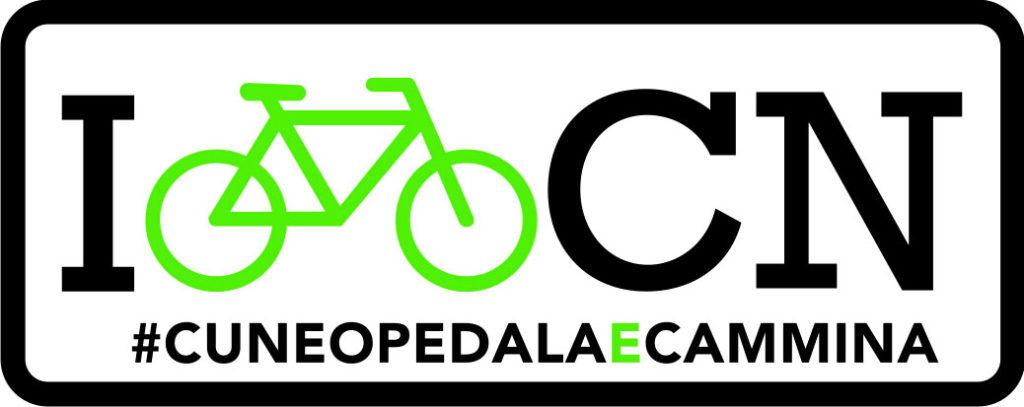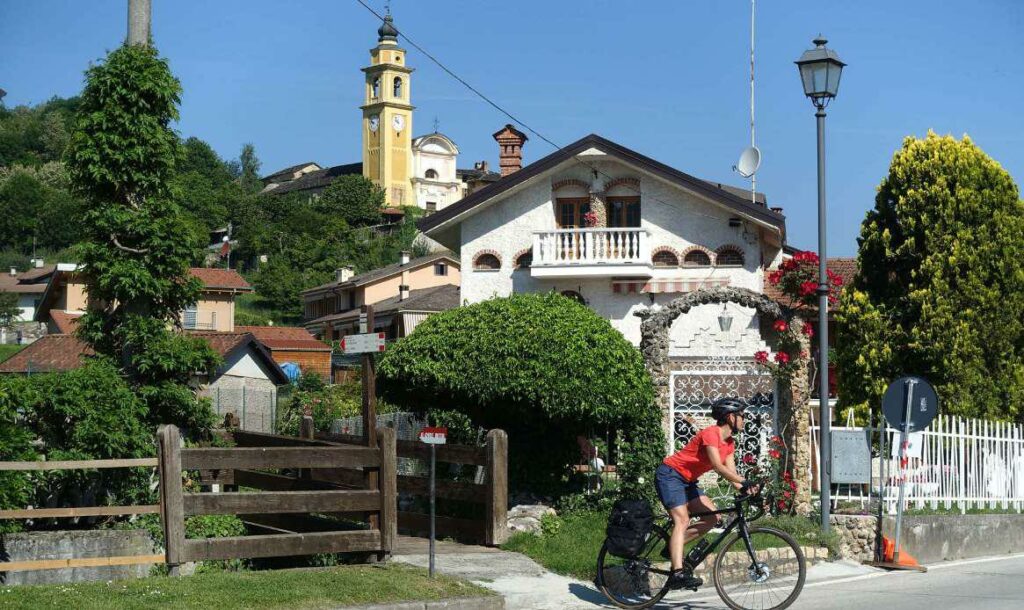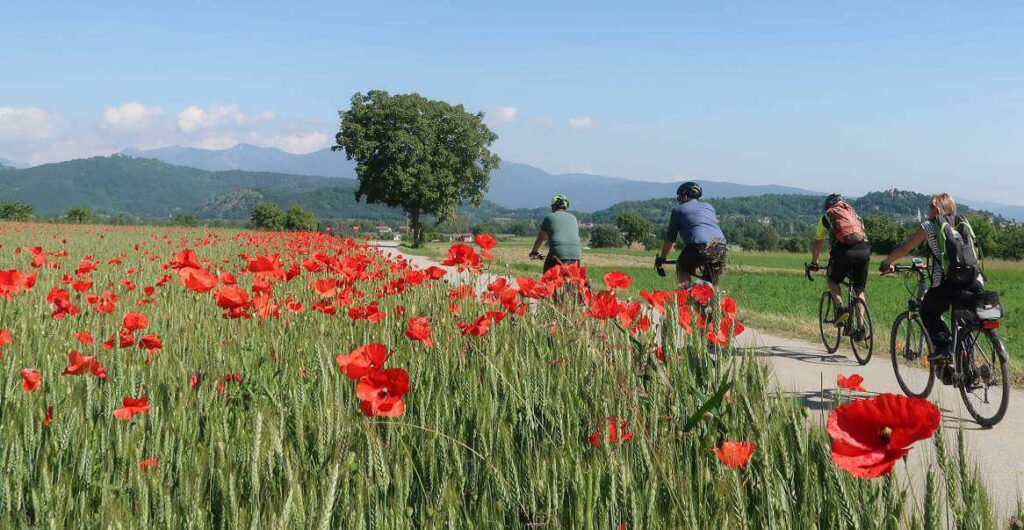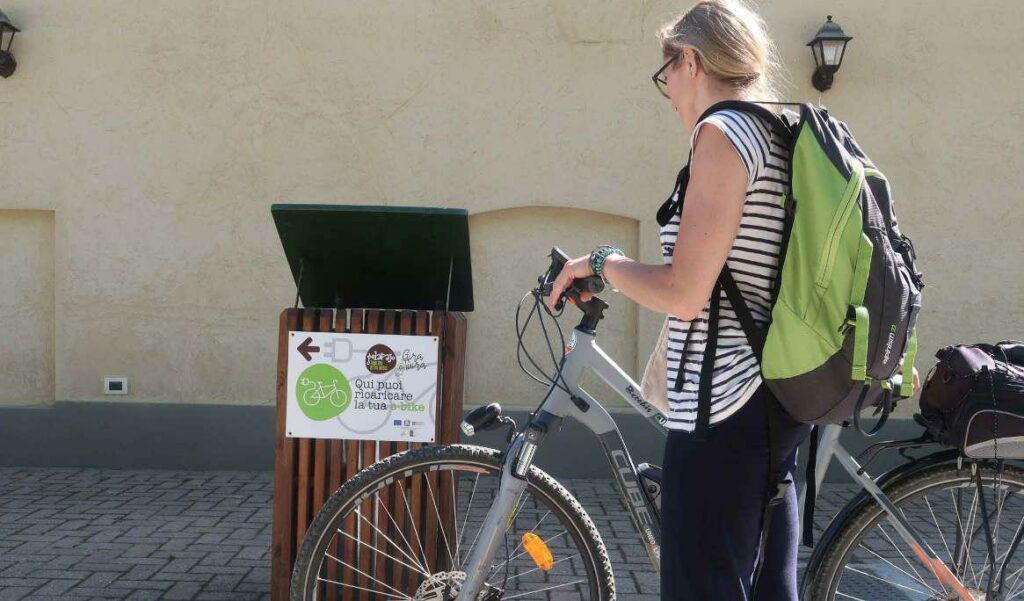From Piazza Galimberti take Via Pascal out of the city, crossing the western part of the Gesso and Stura River Park. You cross the Stura River on the Vassallo cycle/ pedestrian path, rebuilt after the flooding in 2000 and a short climb up Via Giola takes you through the village of Confreria and from there you pedal on the flat, along little quiet roads. Along the way you will encounter only a few cars and one or two tractors a your ride past expanses of fields and orchards, as well as delightful little churches and votive chapels, which together provide an idyllic setting on the outskirts of Cuneo. The route to the Grana Valley is pleasant and not at all demanding. The absence of traffic means you can thoroughly enjoy the views right along the alpine valley where the landscape has changed very little over the centuries. This flat agricultural area is an excellence in the organic farming sector, particularly in the cultivation of cereals and ancient grains. In addition to cereal production, the Grana Valley is also famous for its saffron and cheese.
After Cervasca and Bernezzo, you go through the hamlet of Vallera, where you can enjoy a delicious ice cream at Gelapajo, a friend to cyclists who also has a workshop for bike maintenance and charging. Once in the village of Valgrana, art lovers can opt for a visit to the Ospizio della Trinità (Hospice of the Trinity), a fifteenth-century that provided accommodation for pilgrims. This small building has a rather blasphemous depiction of the Trinity on its facade, depicted in human form. Considered to be heretical, this kind of representation was therefore removed from almost all places except Valgrana, where this is one of the few remaining examples. It is the legacy of the Marquisate of Saluzzo, who ensured free dissemination of art and culture. The small Chapel of San Bernardo, dating back to the fifteenth century, is also worth a visit to admire its colourful witty frescoes.
Continuing the itinerary, passing through the hamlet of Bottonasco where a state-of-the-art intervention is being completed to manage irrigation in the lower valley with a plan d’eau that will be open to the public from 2022, we continue in the direction of Dronero and recommend a detour to visit the interesting Filatoio Rosso di Caraglio spinning mill, the oldest surviving silk mill in Europe. Built between 1676 and 1678, it has been masterfully restored and now houses a museum and exhibition space, a virtuous example of transformation from a silk factory to a cultural factory.
Open for educational visits, the Filatoio Rosso di Caraglio allows visitors to relive the silk production process and its evolution in history, with reproduction of the traditional double-twist spinning system, thanks also to faithful reconstruction of complex machinery of the past. The structure is also home to the Porta di Valle, where you can get tourist information and buy typical local products.

 Français
Français Deutsch
Deutsch Italiano
Italiano


